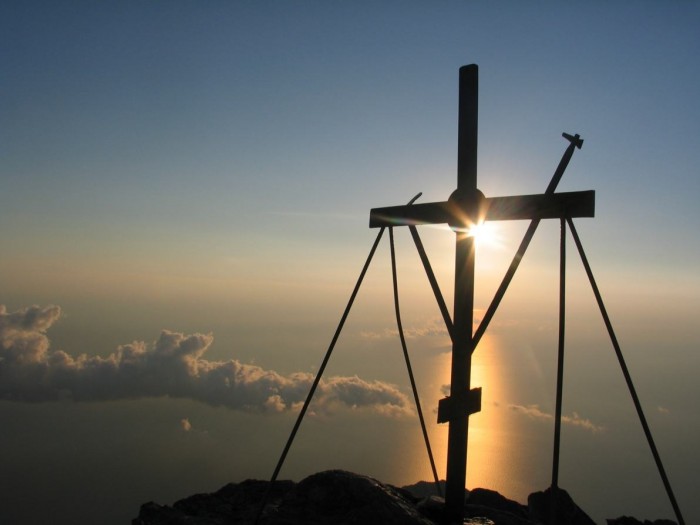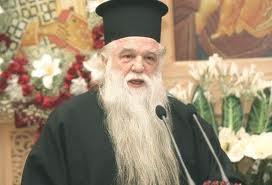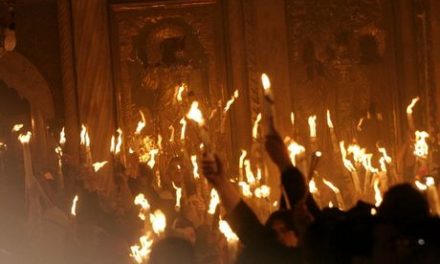The liturgical cycle of the Faith
Educating the Orthodox Heart through Liturgy and Prayer
By Anestis Jordanoglou
Several years ago, my parish participated in the Orthodox Natural Church Development (ONCD) program run by Rev. Fr. Jonathon Ivanoff and sanctioned by the Department of Stewardship, Outreach and Evangelism of our Archdiocese. The program assesses the health of a parish based on eight criteria:
- Empowering and inspired leadership – leadership that encourages members to tap into their gifts to serve the parish and society in general
- Gift-based ministry – enabling parishioners to use their God-given gifts and talents in ministry
- Fervent spirituality – developing active rules of prayer for parishioners within their daily routines, enhancing their life in Christ
- Effective and well-organized church structures – wellorganized and efficient programs and steering bodies
- Inspiring worship – well-done worship services offering the community an opportunity to grow together through prayer
- Holistic fellowship groups – opportunities for people to experience fellowship, bond with others and receive spiritual support
- Need-oriented evangelism – intentional relationship building with non-Orthodox and non-Christians alike in order to invite them to become followers of Christ and members of the Orthodox Church
- Loving relationships – the core of any Christian life
An initial component of the ONCD program is to survey the community to identify areas of growth that will ultimately inform the strategic development of the parish. The survey was distributed to the whole community and analyzed the health of the parish according to eight criteria. The theory behind the program is that if all of these aspects of church life are actualized for the majority of the members of the community, the parish will grow. If any of the criteria are below the “healthy” baseline, it will hinder growth or potentially stop it entirely.
Our parish decided to participate in the ONCD program because after doubling our growth and quadrupling stewardship over the course of several years, we had reached a plateau and we could not determine the reason. When the program results came in, our priest, parish council and some of those most invested in the parish were surprised to find that the two aspects of church life that community members felt least connected to were fervent spirituality and inspiring worship. This was particularly notable because our church received high marks in every other criterion. In the larger community beyond our parish, we were (and are) known as a friendly, loving and dynamic community, unafraid to invite others to our parish and unafraid to be a witness to Christ.
We were shocked by these findings because we had assumed that the liturgical and personal prayer lives of the members of our church were the driving factors of its growth. We had many members devoted to prayer, beginning with our priest, but the survey results were clear. It was time to re-engage with the topic of prayer so that it would be more universally meaningful to the members of the parish. We needed to reeducate ourselves on prayer and be re-formed by it.
The Beginnings of Prayer
Our participation in the prayer life of the Orthodox Church begins at the naming ceremony on the eighth day after we are born, which commemorates the naming of our Savior and, as the object of prayer, is the beginning of our participation in a life in Christ. While the prayers after the birth of a child refer to the child, the prayers are really meant for the healing of the mother. The forty-day prayer service that occurs shortly thereafter is a pre-baptismal service, the offering of the child by theparents to Christ and His Church, which is recognized by the entire community. The service concludes with the Prayer of St. Simeon: “Lord, now let Your servant depart in peace, according to Your word; for my eyes have seen Your salvation, which You have prepared before the face of all people, a Light to enlighten the Gentiles, and the Glory of Your people of Israel.” This prayer is especially bold as it anticipates the child’s participation in the fabric of the Church’s salvific history, leading others to Christ.
The liturgical cycle of these services, culminating in the Holy Mysteries of Baptism, Chrismation and the Eucharist, are evidence of the communal dimension of one’s participation in the life of Christ from the earliest age. It reflects the clearsighted faith of those participating in the services that God will be actively involved in the life of this new member. The services further allow members of the community to reaffirm their own participation in these Holy Mysteries. These services, by nature, educate the heart.
The central liturgical service of our Church, which most devout Orthodox Christians attend, is the Divine Liturgy. It is the most intimate event that exists between God and us. With that in mind, one would hope for prayer to be easy, a seamless, automatic action like breathing. Yet praying the Liturgy can be difficult for most of us. His Eminence Metropolitan Anthony of Sourozh once gave an interview on the subject of prayer in Again Magazine. When asked, “What advice can you offer for making liturgical prayer personal and from the heart, rather than repetitious and mechanical?” His Eminence responded,
All the liturgical prayers which we possess came from the hearts of the saints who composed them. They are not just ready-made prayers which we can recite and call it quits. In order to be able to pray them with our mind and with our heart, we must learn the feelings and the attitudes of those saints who composed them. It is not simply a matter of just using liturgical prayers in church, but of meditating on them during the course of the week… thinking deeply about what they mean…When we use prayers which were composed by the saints, we should pray to these saints for enlightenment—ask them to uphold our prayers and take them upward to God together with us. And if we do these things, I think we will gradually grow into the prayers themselves and into the liturgical action.
“We will gradually grow into the prayers themselves and into the liturgical action” is an especially striking phrase as it connotes the capacity for the Church’s prayers to transform our souls to the degree that we actualize the prayers in our daily activities and actions toward God and others. These liturgical prayers are inherently sanctifying. Metropolitan Anthony’s advice, then, is crucial and necessary for our spiritual growth.
But What About Personal Prayer?
Our liturgical life feeds our personal prayer life and vice versa, not only through our weekly participation in the Divine Liturgy but also within the rhythm of the Church year with its many fasts and feasts. Our Church calendar helps orient us toward God’s acts of salvation in our Faith’s history and in our own individual faith history.
To respond to the needs identified by the ONCD program, our parish is instituting classes on prayer and creating more opportunities to pray both corporately and personally. It begins with the parish council, who see themselves as responsible for the spiritual leadership of the parish, rather than simply stewards of its finances.
Our endeavors to develop a rich life of personal prayer require the same constancy as those we bring to our communal, liturgical prayer life. It was best put by His Grace Bishop Gerasimos of Abydos—a central figure of our spiritual life when I was a student in seminary—who asserted that “the best way to learn how to pray is to pray.” His thesis, which he lived, was that constant prayer requires discipline and effort, but that after a time, it becomes automatic and essential, allowing one to become fully alive in Christ.
Anestis Jordanoglou is office manager of the Department of Religious Education. He and hiw wife, Evis, have two children: Harrison, nine, and Maria, seven.


















